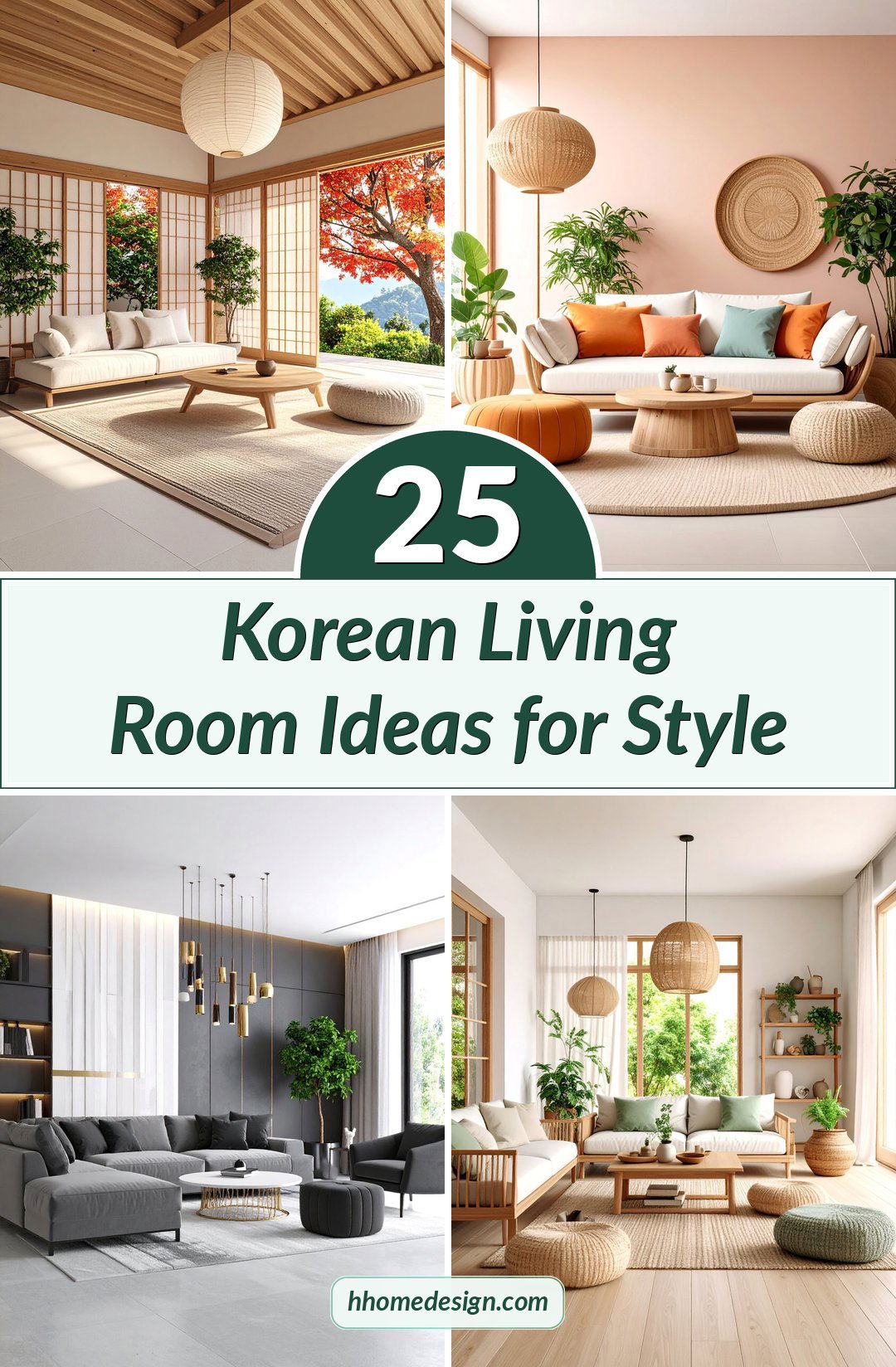
1. Traditional Hanok-Inspired Minimalist Living Room
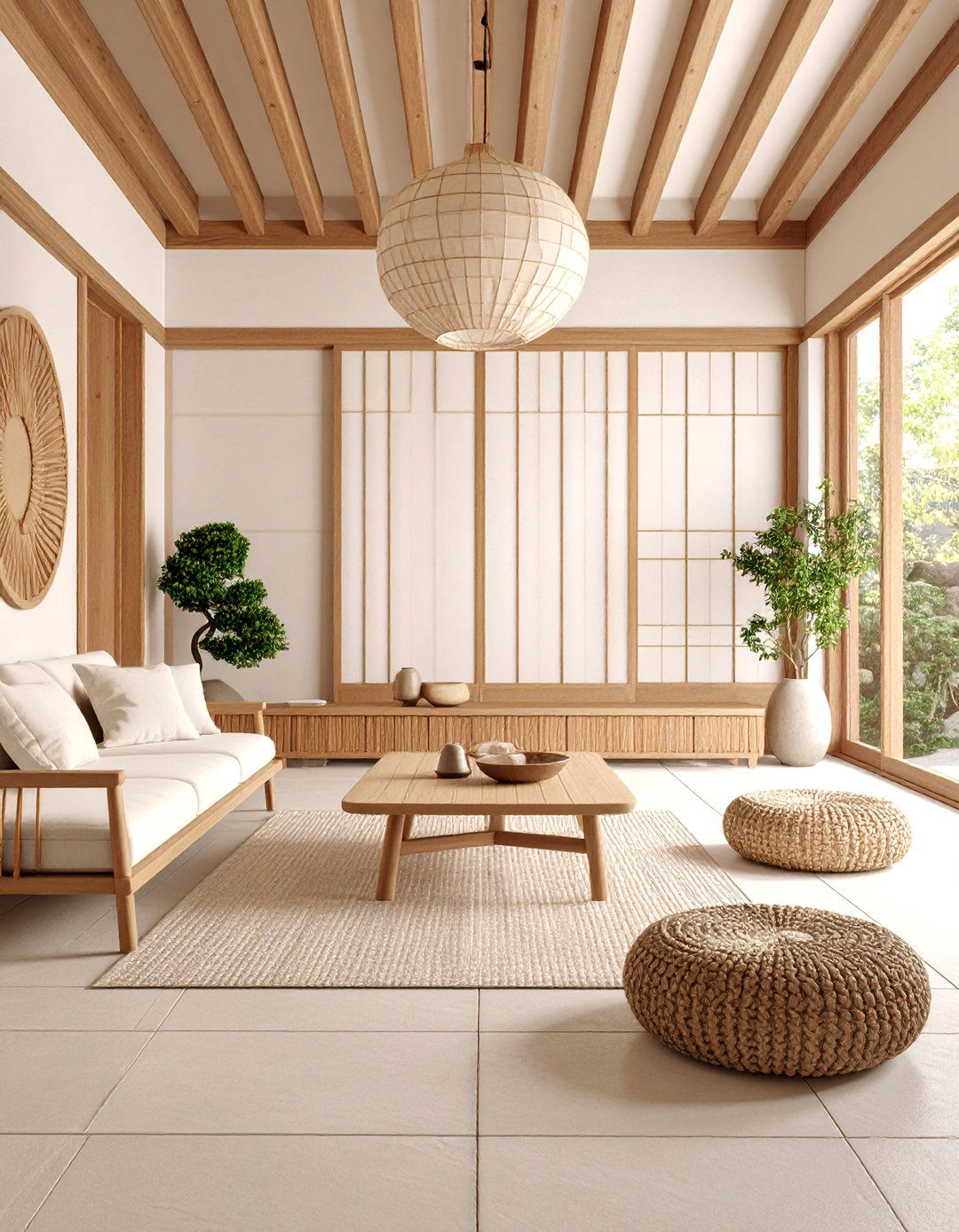
This design captures the essence of traditional Korean hanok architecture through clean wooden framework, neutral earth tones, and natural materials throughout the space. The living room features low-profile furniture made from warm wood, including a traditional Korean low table surrounded by floor cushions for authentic seating. Natural hanji paper screens serve as room dividers while allowing soft light to filter through, creating gentle ambient lighting. Clay roof tiles or wooden ceiling beams add architectural interest overhead, while stone or clay accents on walls provide textural contrast. The color palette remains predominantly white, beige, and natural wood tones with minimal decorative elements to maintain the serene, uncluttered aesthetic fundamental to hanok design principles.
2. Modern Korean Floor Seating Living Room
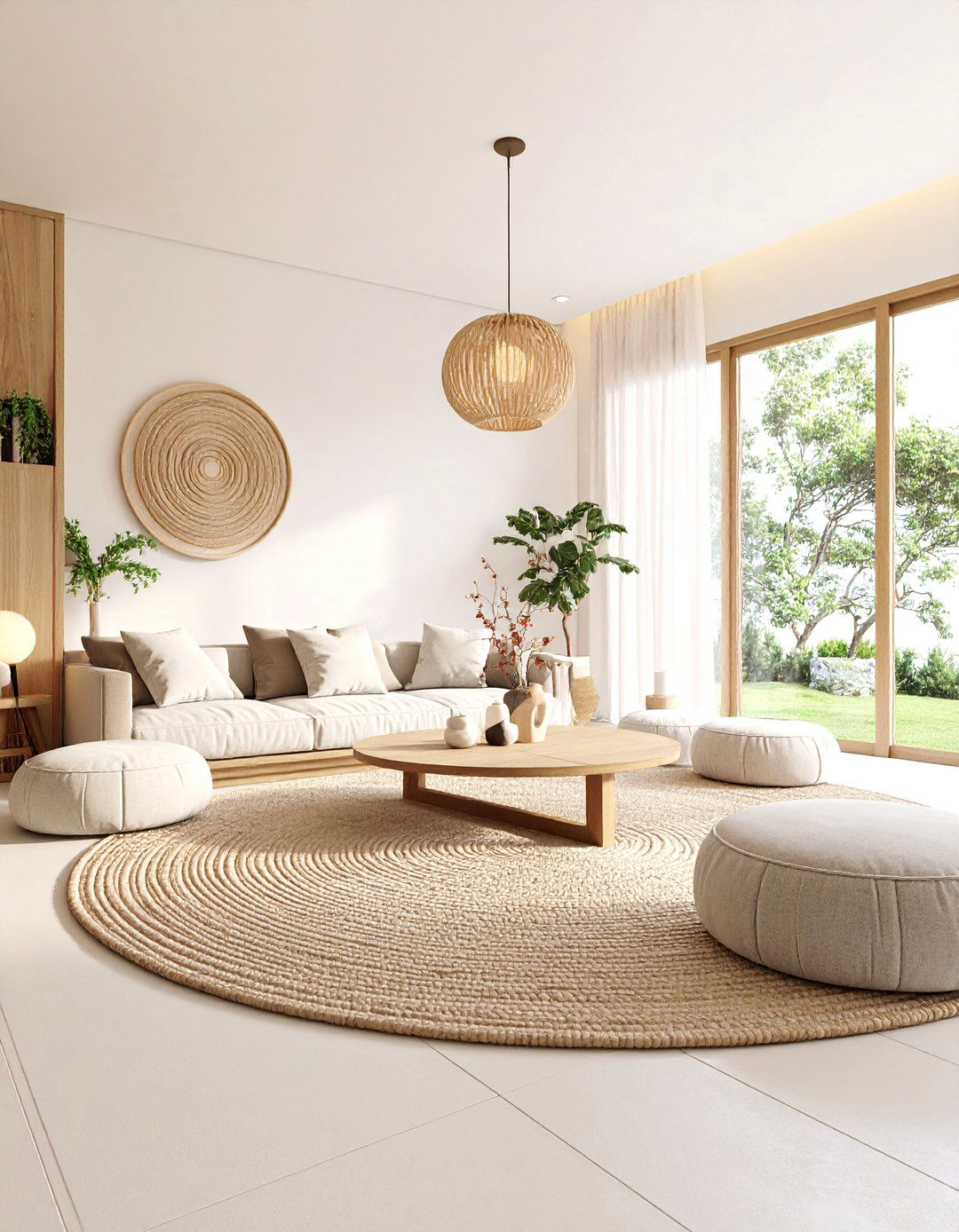
Embrace the Korean cultural tradition of floor-based living with this contemporary approach to ondol-style comfort and social gathering. The design centers around a large, plush area rug or heated flooring system that defines the seating area, complemented by comfortable floor cushions, bean bags, and low backrests for extended sitting. A sleek low coffee table serves as the focal point for tea ceremonies, meals, or casual conversations. Built-in storage solutions along the walls keep the space uncluttered while housing entertainment systems and personal items. Soft lighting from floor lamps and recessed ceiling fixtures creates a warm, intimate atmosphere. The overall aesthetic balances modern convenience with traditional Korean social customs, encouraging relaxation and meaningful connections in a comfortable, ground-level environment.
3. Scandinavian-Korean Fusion Living Room
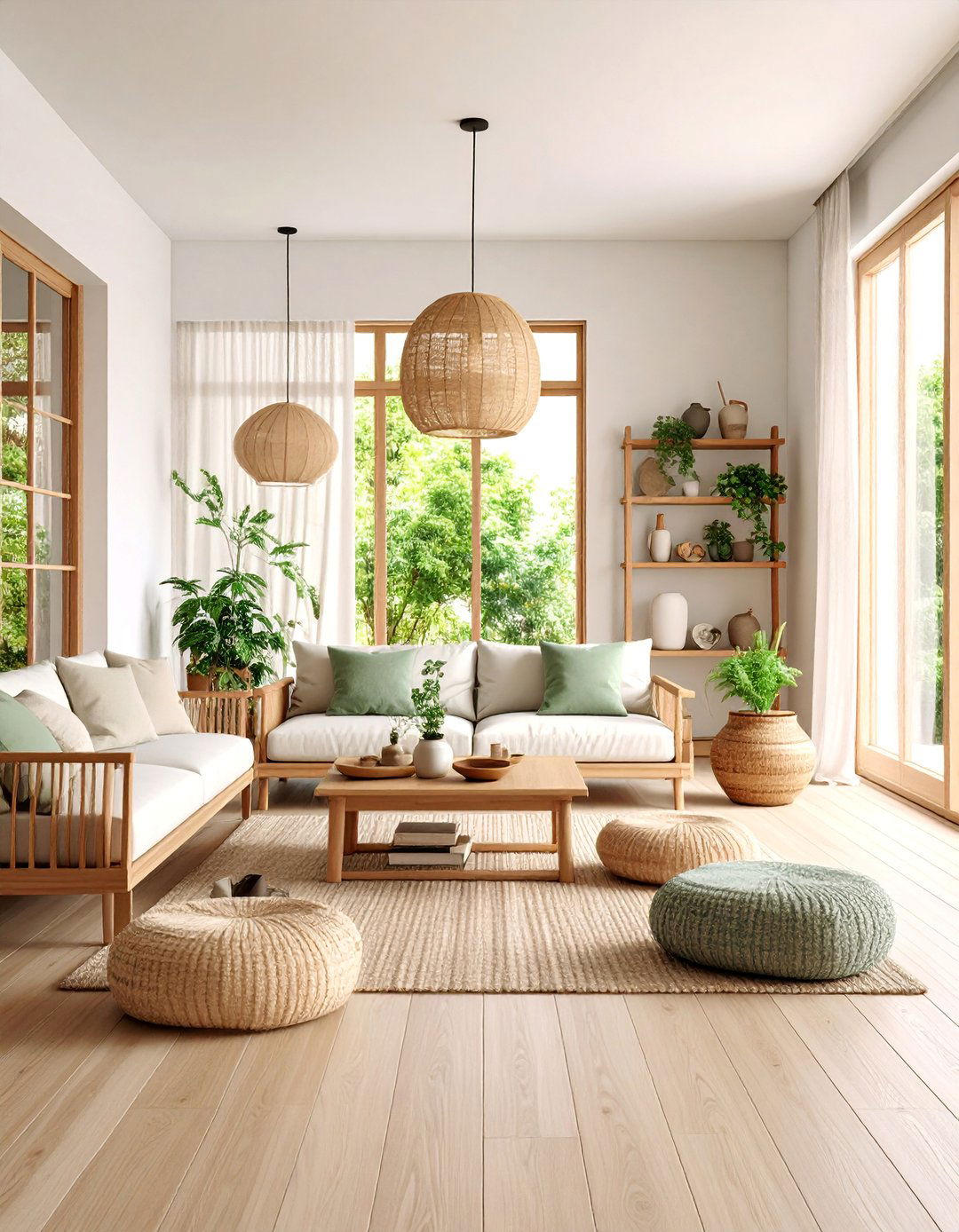
This hybrid design combines Korean minimalism with Scandinavian hygge principles, creating a cozy yet sophisticated living space that emphasizes both cultures' love for natural materials and functional design. Light oak or birch furniture pieces feature clean lines characteristic of both design philosophies, while neutral textiles in cream, sage green, and soft gray add warmth and comfort. Large windows with minimal treatments maximize natural light, complemented by modern pendant lighting and candles for evening ambiance. Korean elements appear through low-profile seating arrangements, traditional pottery displayed on floating shelves, and indoor plants that bring nature indoors. The space incorporates storage solutions that maintain visual simplicity while providing practical organization for modern living needs.
4. Newtro Korean Living Room with Retro Accents

Channel Korea's popular Newtro trend by blending nostalgic elements with contemporary design for a living room that celebrates both past and present aesthetics. Vintage-inspired furniture pieces like velvet armchairs, brass accent tables, and mid-century modern sofas create focal points throughout the space. The color palette incorporates warm oranges, deep browns, and muted yellows alongside neutral backgrounds, while geometric patterns on rugs and cushions add visual interest. Traditional Korean elements appear through ceramic vases, vintage posters or artwork, and classic wooden furniture pieces. Modern technology integrates seamlessly through sleek entertainment centers and contemporary lighting fixtures. This design creates a playful, comfortable environment that honors Korean design heritage while embracing contemporary lifestyle needs and cultural references.
5. Achromatic Korean Living Room Design
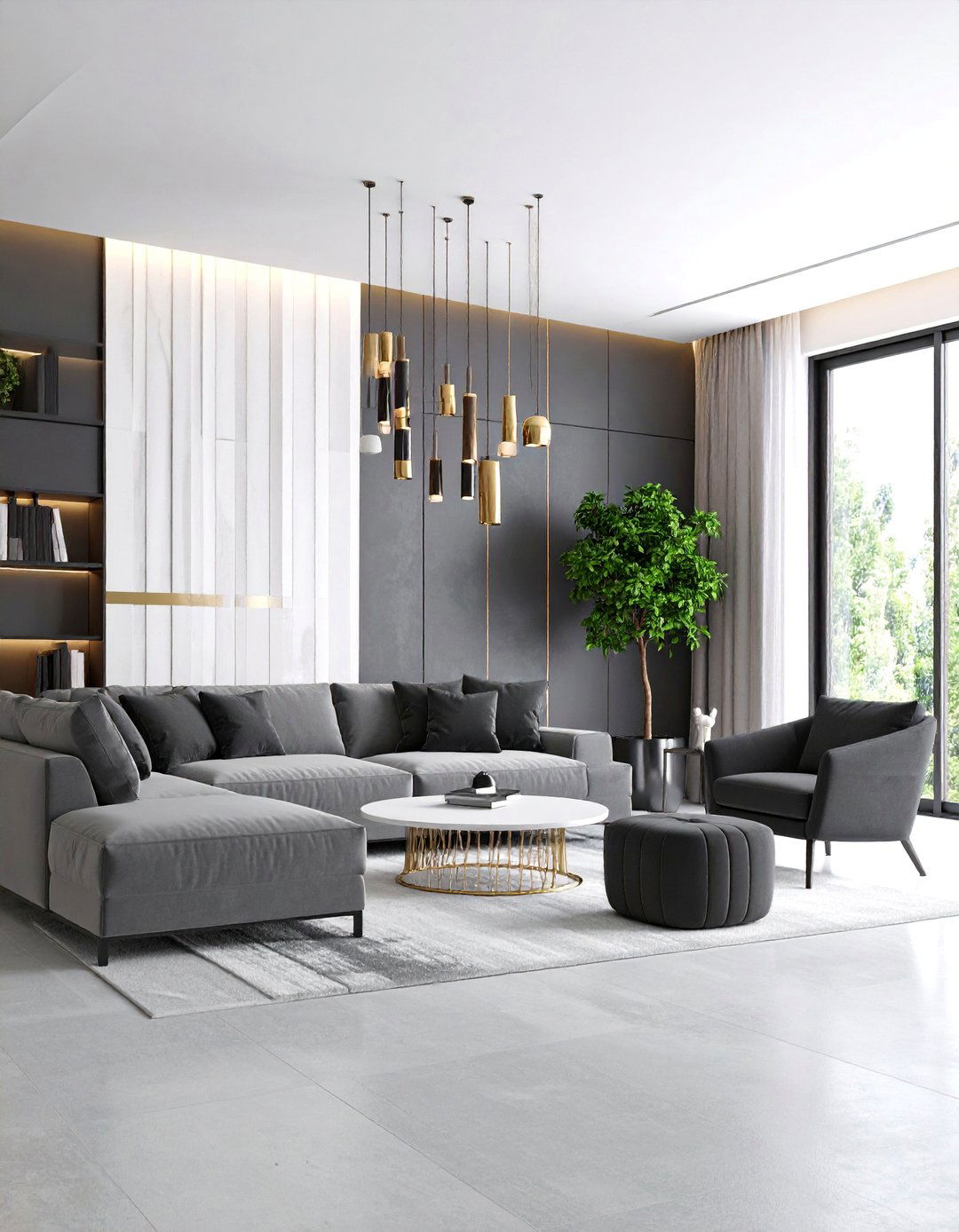
Create a sophisticated urban aesthetic using Korea's popular achromatic design trend, focusing exclusively on black, white, and various shades of gray for a sleek, metropolitan atmosphere. The furniture selection emphasizes clean geometric shapes with a monochromatic color scheme, including charcoal gray sofas, white coffee tables, and black accent chairs. Metallic elements in chrome or brushed steel add contemporary sophistication through lighting fixtures, hardware, and decorative objects. Textural variety comes through different materials like smooth leather, woven fabrics, polished stone, and matte finishes rather than color variation. The lighting design incorporates both ambient and task lighting to create depth and visual interest within the limited color palette. This minimalist approach creates a calm, focused environment perfect for modern urban living.
6. Natural Wood Korean Living Room
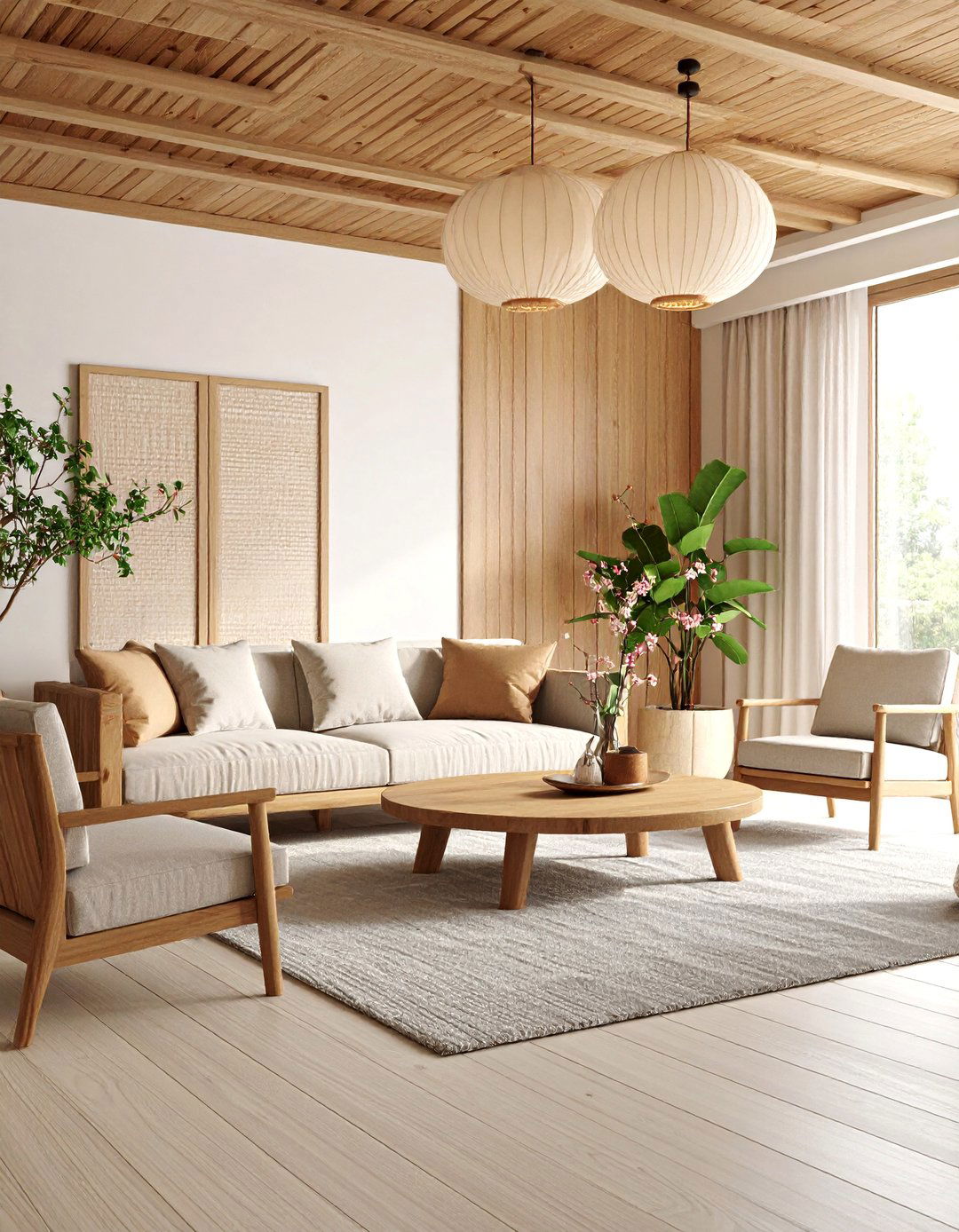
Celebrate Korea's deep connection to natural materials through a living room design that prominently features various wood species, grains, and finishes throughout the space. Furniture pieces showcase beautiful wood craftsmanship, from live-edge coffee tables to handcrafted storage cabinets and comfortable wooden seating with soft cushions. The walls incorporate wood paneling or accent features that add warmth and texture while maintaining clean lines. Different wood tones create visual depth, combining lighter birch or pine with richer walnut or oak elements. Natural fiber rugs, hemp textiles, and bamboo accessories complement the wooden elements while maintaining the organic aesthetic. Plants and greenery integrate seamlessly with the natural material palette, creating a living space that feels connected to nature and Korean craftsmanship traditions.
7. Korean Living Room with Ondol-Inspired Heated Flooring
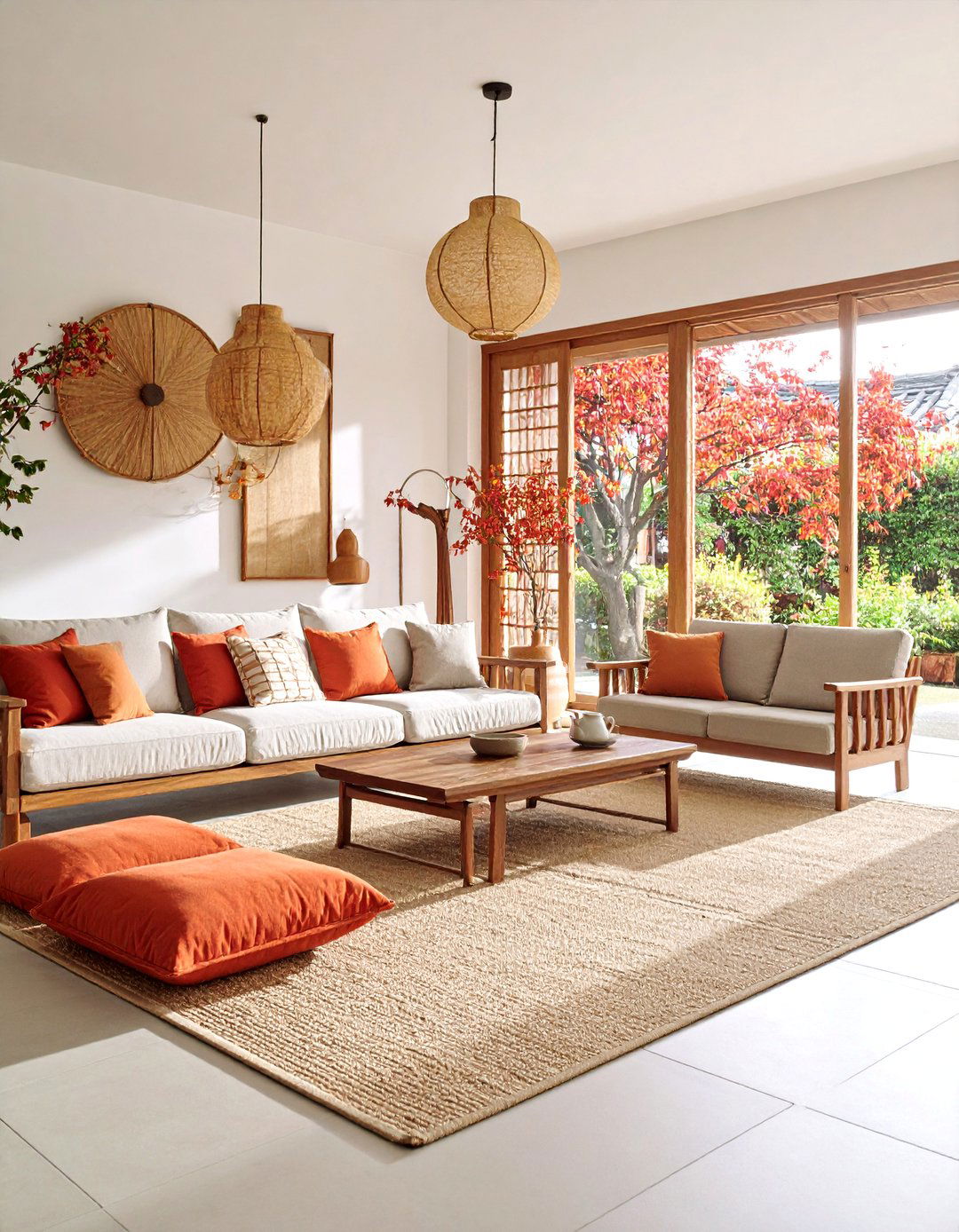
Design a modern interpretation of traditional Korean ondol heating systems that creates ultimate comfort and warmth throughout the living space during colder months. The heated flooring system allows for comfortable floor seating arrangements with thick rugs, cushions, and low furniture that take advantage of the warm surfaces. Furniture selection emphasizes pieces that complement floor-level living, including low-profile sofas, floor lamps, and coffee tables that don't obstruct the room's horizontal emphasis. Natural stone or tile flooring materials conduct heat efficiently while providing beautiful, durable surfaces that honor traditional ondol construction methods. The heating system integration allows for flexible furniture arrangements and seasonal adjustments. This design creates a uniquely Korean living experience that prioritizes physical comfort and traditional heating methods adapted for contemporary homes.
8. Korean Living Room with Hanji Paper Screens
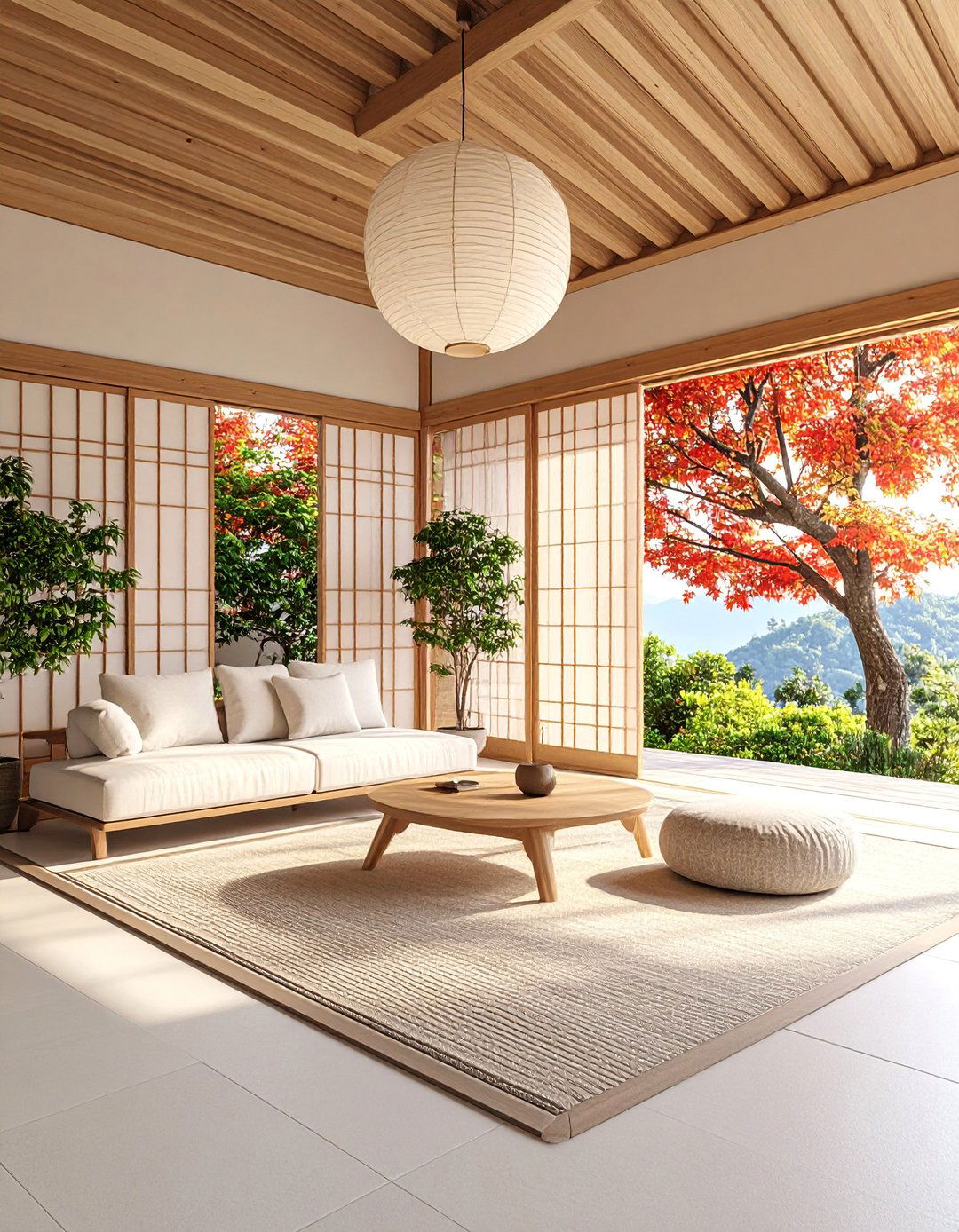
Incorporate traditional Korean hanji paper screens as both functional room dividers and beautiful decorative elements that filter light and create intimate spaces within the larger living area. These handcrafted screens feature wooden frames with translucent hanji paper that allows soft, diffused light to pass through while providing privacy and visual separation. The screens can be folding, sliding, or stationary panels that define different functional zones for reading, conversation, or entertainment. Behind the screens, subtle lighting creates beautiful shadowing effects and ambient illumination throughout the evening hours. The furniture and decor complement the screens' organic, handmade aesthetic through natural materials, neutral colors, and minimal ornamentation. This design celebrates traditional Korean craftsmanship while providing practical solutions for modern open-plan living spaces.
9. Korean Living Room with Indoor Garden Elements
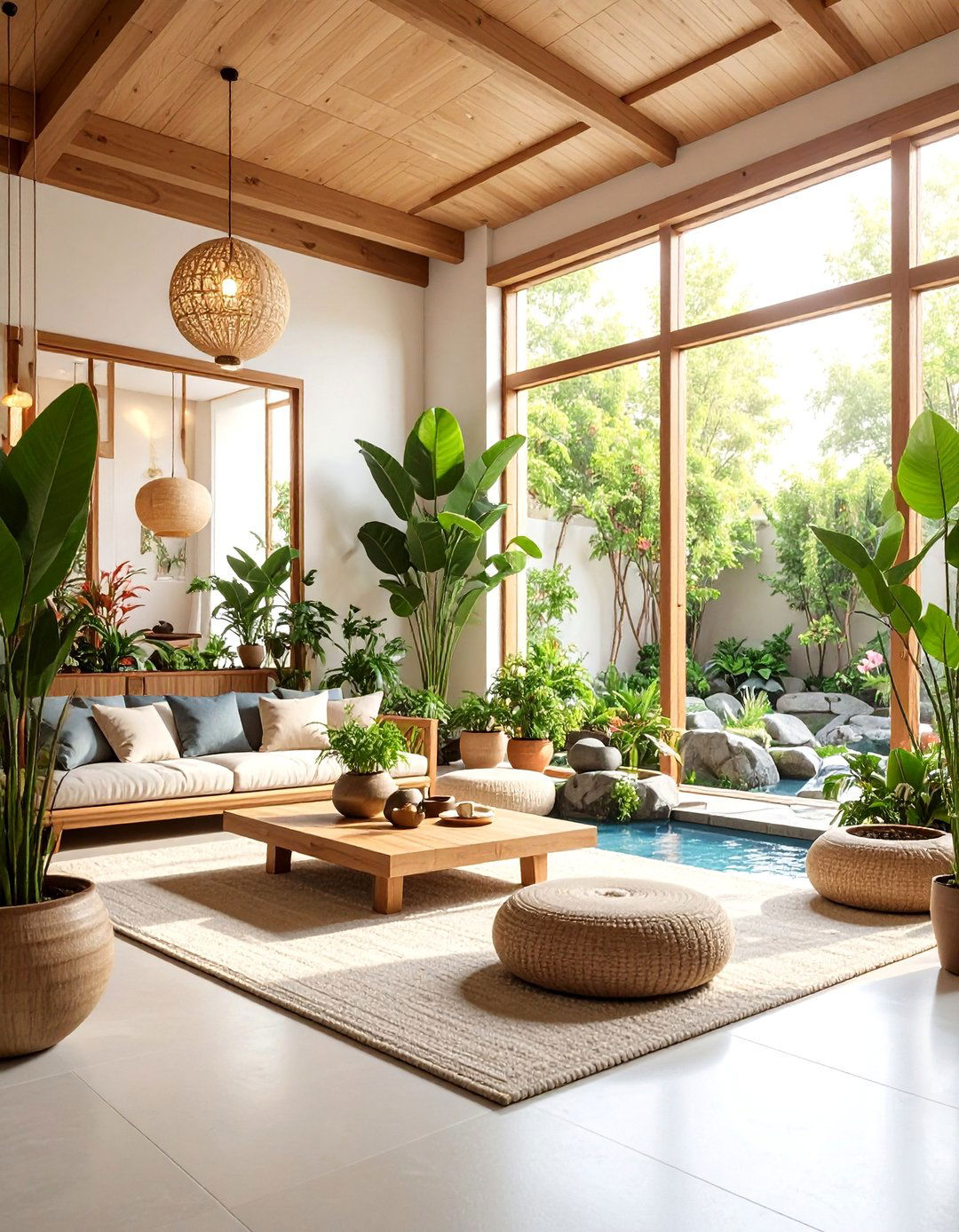
Create a living space that brings the tranquility of Korean gardens indoors through carefully selected plants, natural materials, and design elements that promote peace and connection with nature. Large planters hold bamboo, peace lilies, or traditional Korean plants that thrive in indoor conditions, while smaller potted plants create green accents throughout the space. Natural stone features, wooden plant stands, and water elements like small fountains add garden-inspired details. The furniture selection emphasizes natural materials and earth tones that complement the plant life, including wooden seating, woven textiles, and organic-shaped accessories. Large windows or sliding doors connect the indoor garden space with any outdoor areas, while natural lighting supports both plants and human comfort. This design creates a serene, healthy living environment that reflects Korean appreciation for nature.
10. Modern Korean Living Room with Built-In Storage
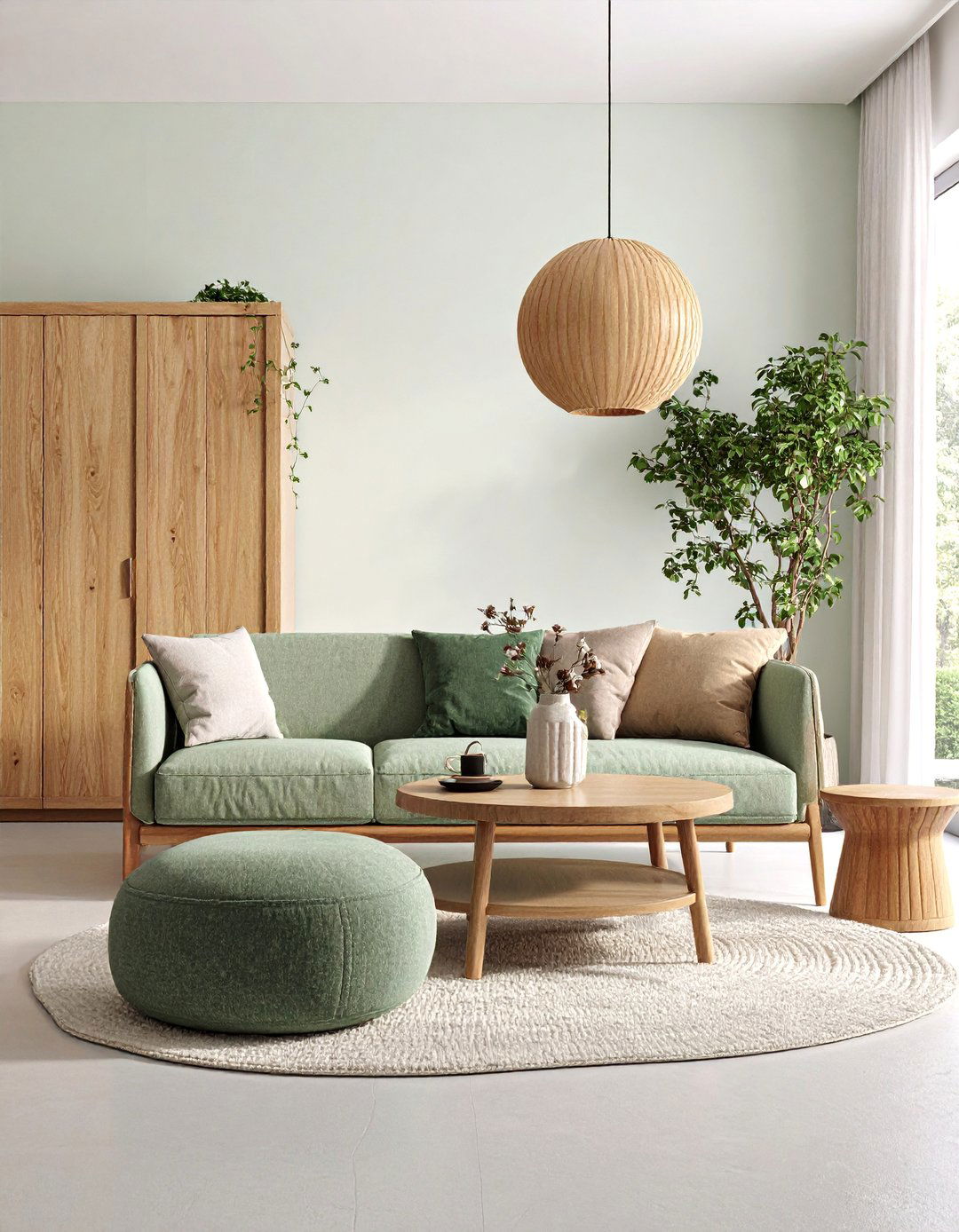
Maximize functionality and maintain minimalist aesthetics through custom built-in storage solutions that provide ample organization while preserving clean lines and uncluttered surfaces throughout the living space. Floor-to-ceiling storage units integrate seamlessly with the room's architecture, housing entertainment systems, books, personal items, and seasonal decorations behind sleek, handle-less doors. The built-in elements feature natural wood finishes or neutral colors that complement the overall design scheme while providing extensive practical storage. Furniture pieces remain minimal and multi-functional, with storage ottomans, coffee tables with hidden compartments, and modular seating that adapts to different needs. The design emphasizes quality over quantity, with carefully selected decorative objects and plants displayed in dedicated spaces. This approach creates a peaceful, organized environment that supports both daily functionality and Korean design principles.
11. Korean Living Room with Natural Light Optimization

Design a living space that maximizes natural light through strategic window treatments, reflective surfaces, and light-colored materials that create bright, airy atmospheres throughout the day. Large windows feature minimal treatments like sheer white curtains or bamboo blinds that provide privacy while allowing maximum light penetration. Light-colored walls, floors, and furniture reflect and amplify natural illumination, while strategically placed mirrors bounce light throughout the space. The furniture selection emphasizes light woods, white or cream upholstery, and glass or lucite accent pieces that maintain visual transparency. Skylights or clerestory windows add additional natural light sources when possible. The overall design creates a connection between indoor and outdoor environments while promoting the Korean aesthetic principle of harmony with natural cycles and seasonal light changes.
12. Korean Living Room with Traditional Pottery Display

Showcase Korea's rich ceramic tradition through carefully curated displays of traditional and contemporary pottery that serve as both functional objects and artistic focal points throughout the living space. Built-in shelving or traditional wooden display stands present various ceramic pieces, from historical celadon vases to modern sculptural works by contemporary Korean artists. The pottery collection includes functional items like tea sets, serving bowls, and planters alongside purely decorative pieces that add cultural depth. Lighting design highlights the ceramic displays through focused spotlights or ambient illumination that enhances the glazes and forms. The surrounding decor maintains neutral tones and minimal patterns that allow the pottery to command attention. This design celebrates Korean craftsmanship while creating conversation pieces and cultural connections within the contemporary living environment.
13. Flexible Korean Living Room with Modular Furniture
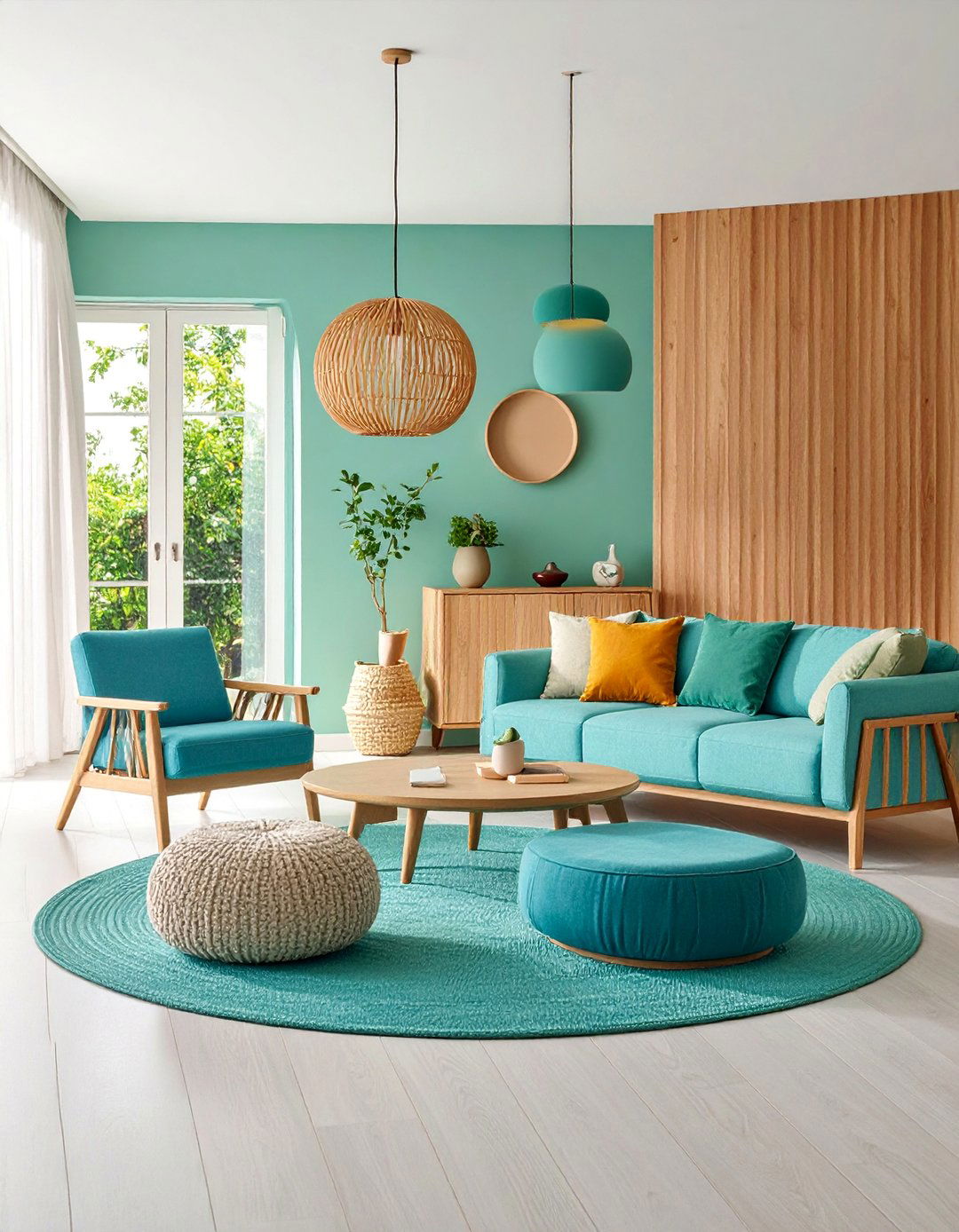
Create an adaptable living space using modular furniture systems that accommodate various activities, group sizes, and seasonal changes while maintaining Korean design principles of simplicity and functionality. Modular seating units can be reconfigured for intimate conversations, large gatherings, or individual relaxation, while folding or nesting tables provide surface space when needed. Storage systems feature moveable components that adapt to changing needs and seasonal storage requirements. The flexible design allows for easy cleaning and maintenance, supporting Korean preferences for organized, efficient living spaces. Neutral colors and natural materials ensure that different configurations maintain visual harmony. This approach reflects modern Korean urban living where space efficiency and adaptability are essential, while honoring traditional values of hospitality and community gathering.
14. Korean Living Room with Warm Lighting Design
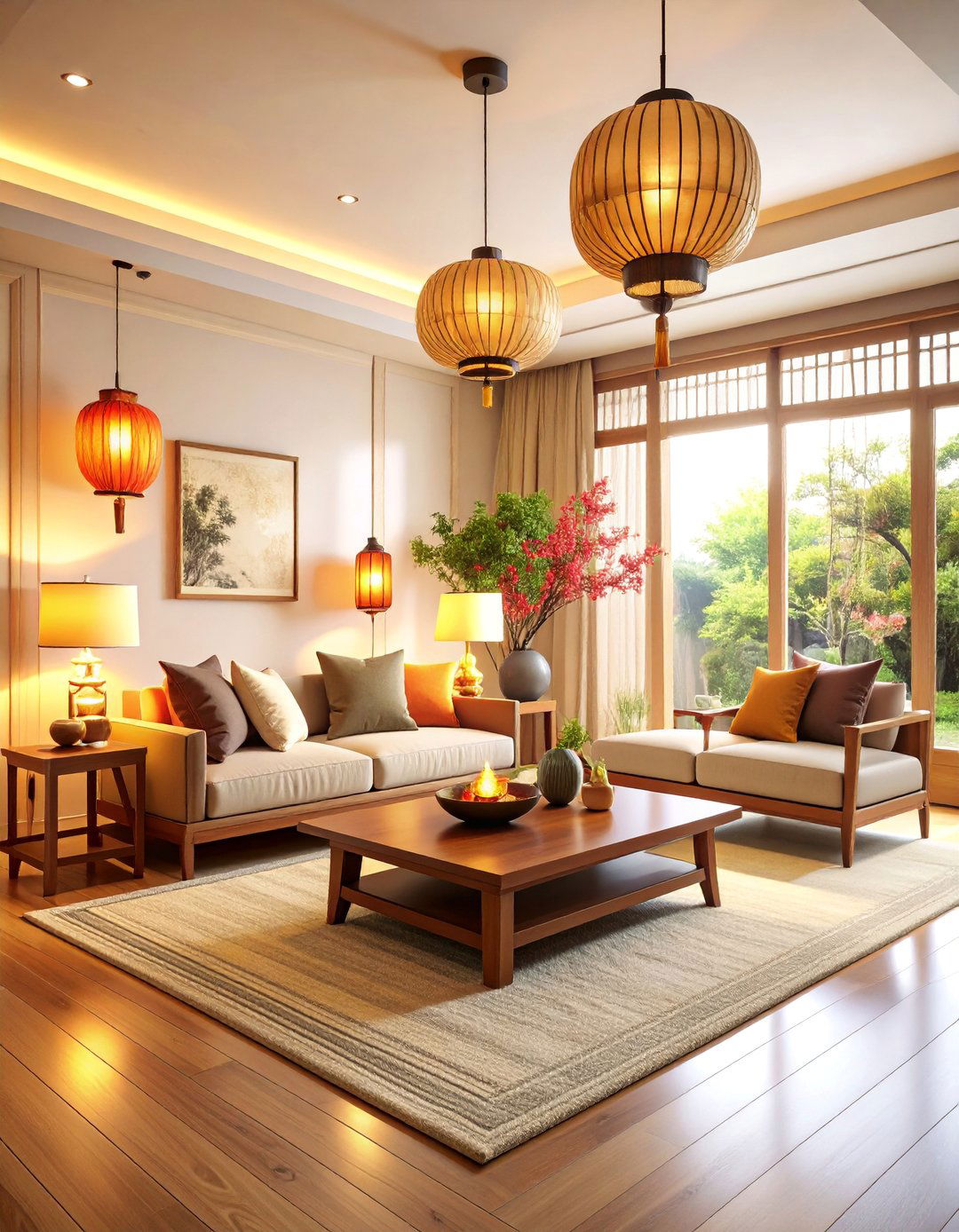
Develop a comprehensive lighting scheme that creates intimate, comfortable atmospheres through layered lighting sources that support both daily activities and evening relaxation in true Korean hospitality tradition. Ambient lighting from recessed ceiling fixtures provides general illumination, while table lamps and floor lamps add task and accent lighting for reading or conversation areas. Traditional Korean-inspired pendant lights or chandeliers serve as focal points and architectural elements. Candles and lanterns provide warm, flickering light for special occasions or meditation practices. The lighting design incorporates dimmer controls and multiple switching options to adjust brightness levels throughout the day. Warm color temperatures enhance the natural materials and create cozy, welcoming environments that encourage lingering and social connection.
15. Korean Living Room with Artisan Textile Features
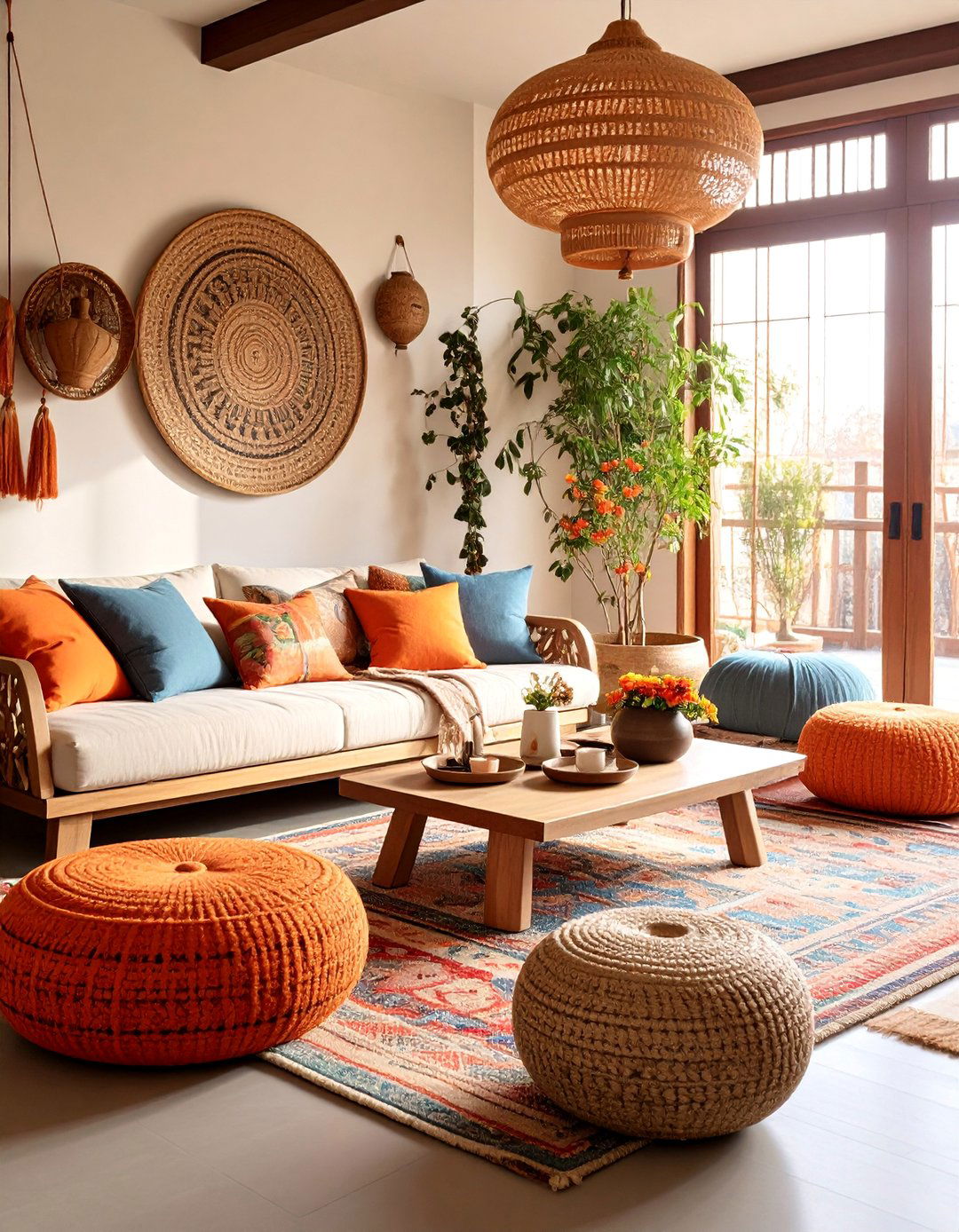
Integrate handwoven textiles and traditional Korean fabric arts throughout the living space to add warmth, texture, and cultural authenticity while supporting local artisans and traditional crafts. Traditional Korean textiles like ramie, hemp, or silk appear in upholstery, window treatments, and decorative accessories with subtle patterns and natural dyes. Contemporary interpretations of traditional Korean textile designs create unique pillow covers, wall hangings, or room dividers that honor heritage while fitting modern lifestyles. The color palette draws from traditional Korean textile colors including natural whites, earth tones, and soft plant-based dyes. Textile care and display methods reflect Korean attention to quality and preservation of beautiful objects. This design approach celebrates Korean craftsmanship while creating comfortable, culturally rich living environments.
16. Minimalist Korean Living Room with Statement Art

Create a serene, uncluttered living space that serves as a gallery for carefully selected Korean art pieces, allowing artwork to become the primary decorative focus while maintaining minimalist design principles. Large-scale paintings, traditional calligraphy, or contemporary sculptures command attention against neutral backgrounds, while smaller works create intimate viewing experiences in reading or conversation areas. The furniture selection remains simple and functional, providing comfortable seating and surfaces without competing with the artistic displays. Lighting design highlights artwork through adjustable track lighting, picture lights, or natural illumination from large windows. Storage solutions keep personal items hidden to maintain the gallery-like atmosphere. This approach reflects Korean appreciation for art, beauty, and contemplation while creating sophisticated, culturally enriched living environments.
17. Korean Living Room with Tea Ceremony Space
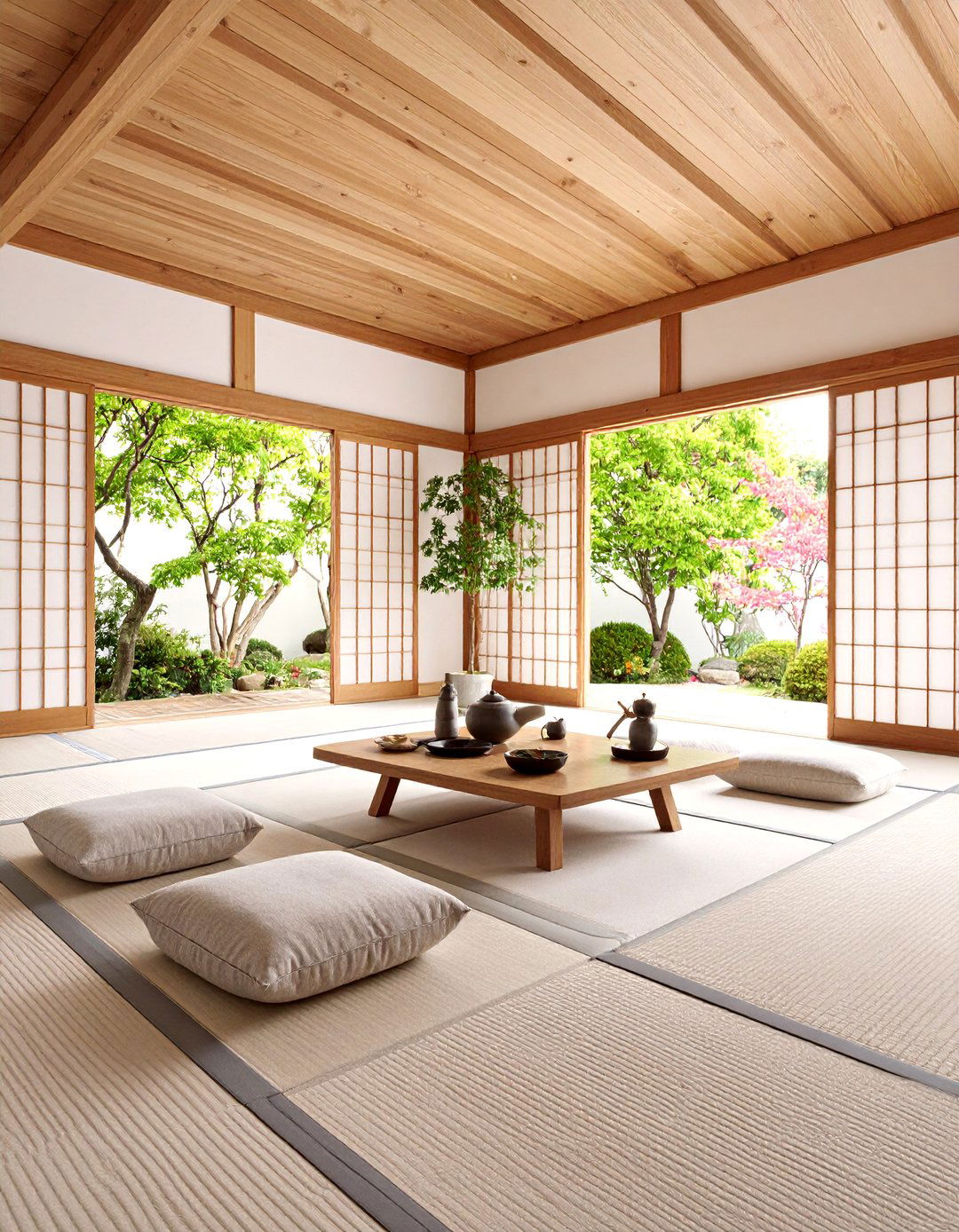
Designate a special area within the living room for traditional Korean tea ceremony practices, creating opportunities for mindful relaxation, meditation, and social bonding through time-honored rituals. The tea area features low seating arrangements with comfortable cushions, a traditional low table, and storage for tea implements, ceramics, and seasonal serving pieces. Natural materials like wood, bamboo, and stone create appropriate backgrounds for tea ceremony aesthetics, while plants and natural elements enhance the meditative atmosphere. The space can be defined through area rugs, low screens, or subtle level changes that create intimate gathering areas. Lighting provides both functional illumination for tea preparation and ambient mood lighting for relaxation. This design honors Korean tea culture while providing opportunities for stress relief and meaningful social interaction.
18. Contemporary Korean Living Room with Technology Integration
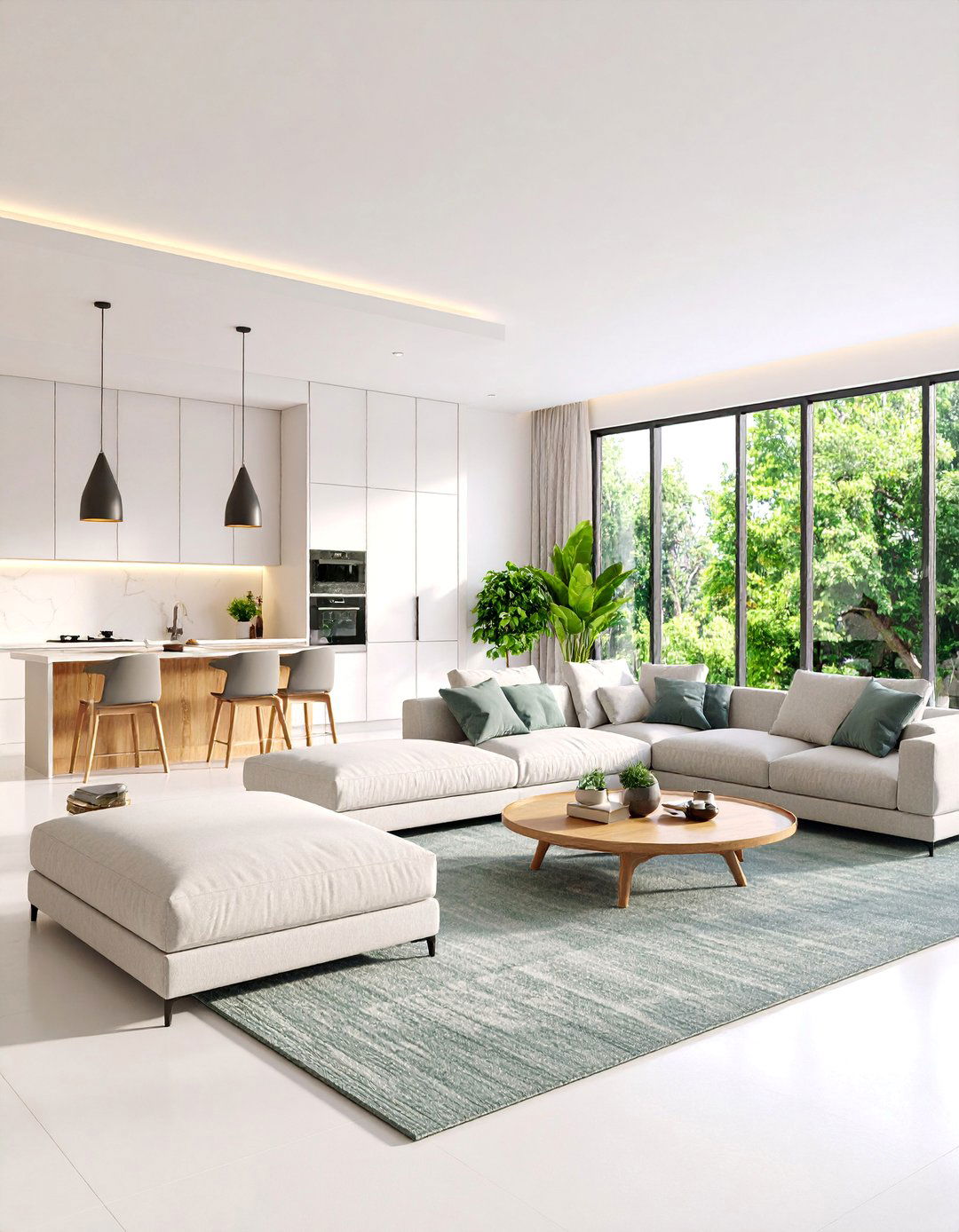
Balance modern technology needs with Korean design aesthetics through thoughtful integration of entertainment systems, smart home features, and contemporary conveniences that enhance comfort without compromising visual simplicity. Built-in entertainment centers house televisions, audio systems, and gaming equipment behind sleek panels or within custom cabinetry that maintains clean lines. Smart lighting, climate control, and security systems operate discretely through minimal control interfaces. Charging stations and cable management systems keep technology organized and accessible. The furniture selection accommodates both traditional Korean seating preferences and contemporary entertainment needs through adjustable, multi-functional pieces. This approach creates living spaces that support modern lifestyles while preserving Korean values of harmony, simplicity, and quality design.
19. Korean Living Room with Seasonal Design Elements

Develop a living space that adapts to Korea's distinct four seasons through changeable elements, materials, and accessories that reflect seasonal beauty while maintaining core design principles year-round. Summer arrangements emphasize cooling elements like bamboo accessories, lighter textiles, and increased natural ventilation, while winter configurations add warm textiles, heated seating areas, and cozy lighting. Spring and autumn transitions incorporate seasonal colors, plants, and natural materials that celebrate each season's unique characteristics. Storage solutions accommodate seasonal decoration rotation, while core furniture and architectural elements remain constant. This design approach reflects Korean cultural appreciation for seasonal cycles and natural rhythms while creating living spaces that feel fresh and appropriate throughout the year.
20. Korean Living Room with Meditation Corner
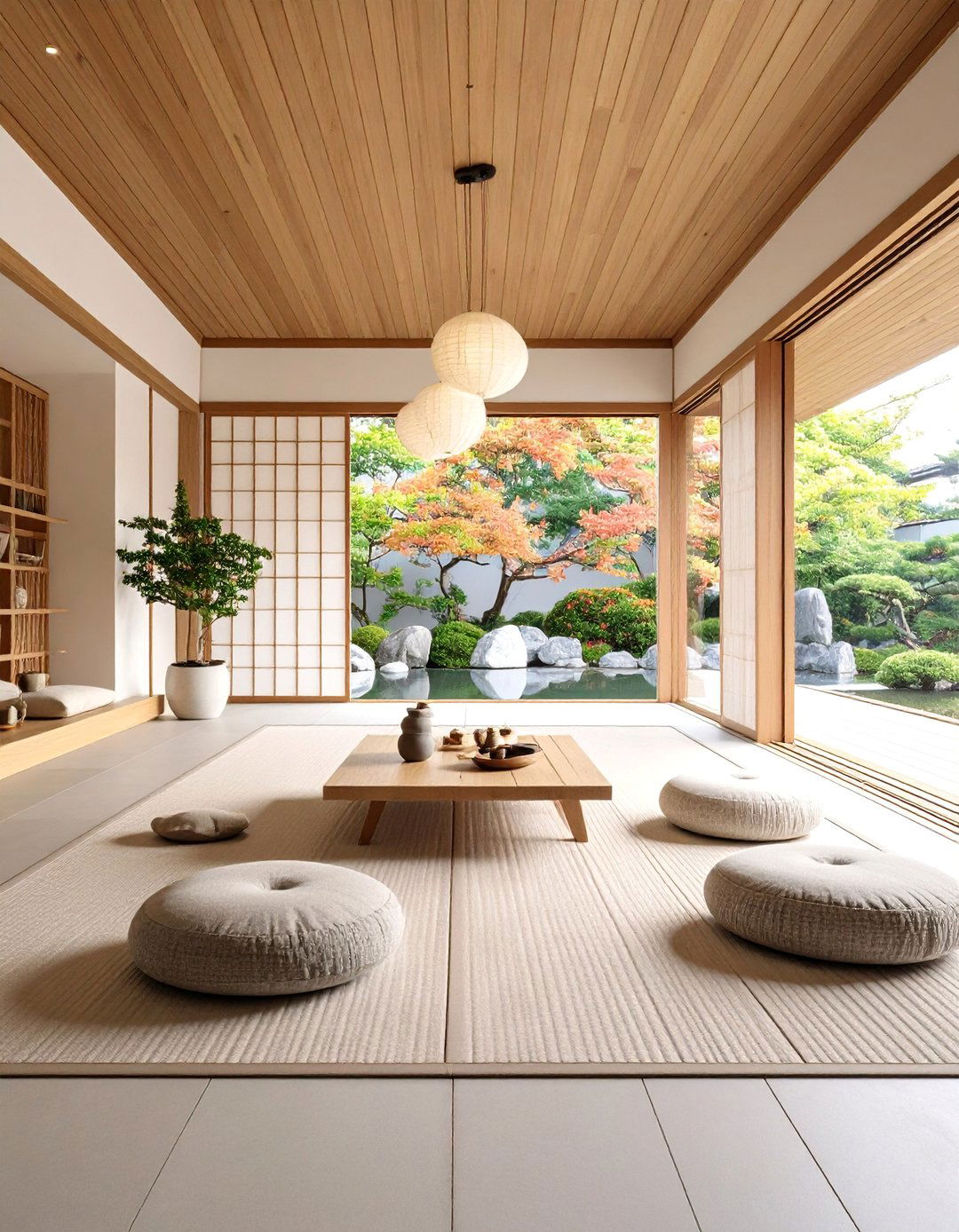
Create a dedicated space for meditation, mindfulness practice, and personal reflection within the living room that supports mental wellness and spiritual practices important in Korean culture. The meditation area features comfortable floor seating, natural materials, and minimal distractions that promote focus and inner peace. Soft lighting, natural textures, and perhaps a small water feature or plants create calming sensory experiences. Storage keeps meditation supplies, books, and personal items organized but accessible. The space can be partially separated through screens, plants, or furniture arrangement while remaining integrated with the larger living area. This design acknowledges the importance of mental and spiritual well-being in Korean lifestyle philosophy while providing practical support for mindfulness practices.
21. Korean Living Room with Courtyard Connection
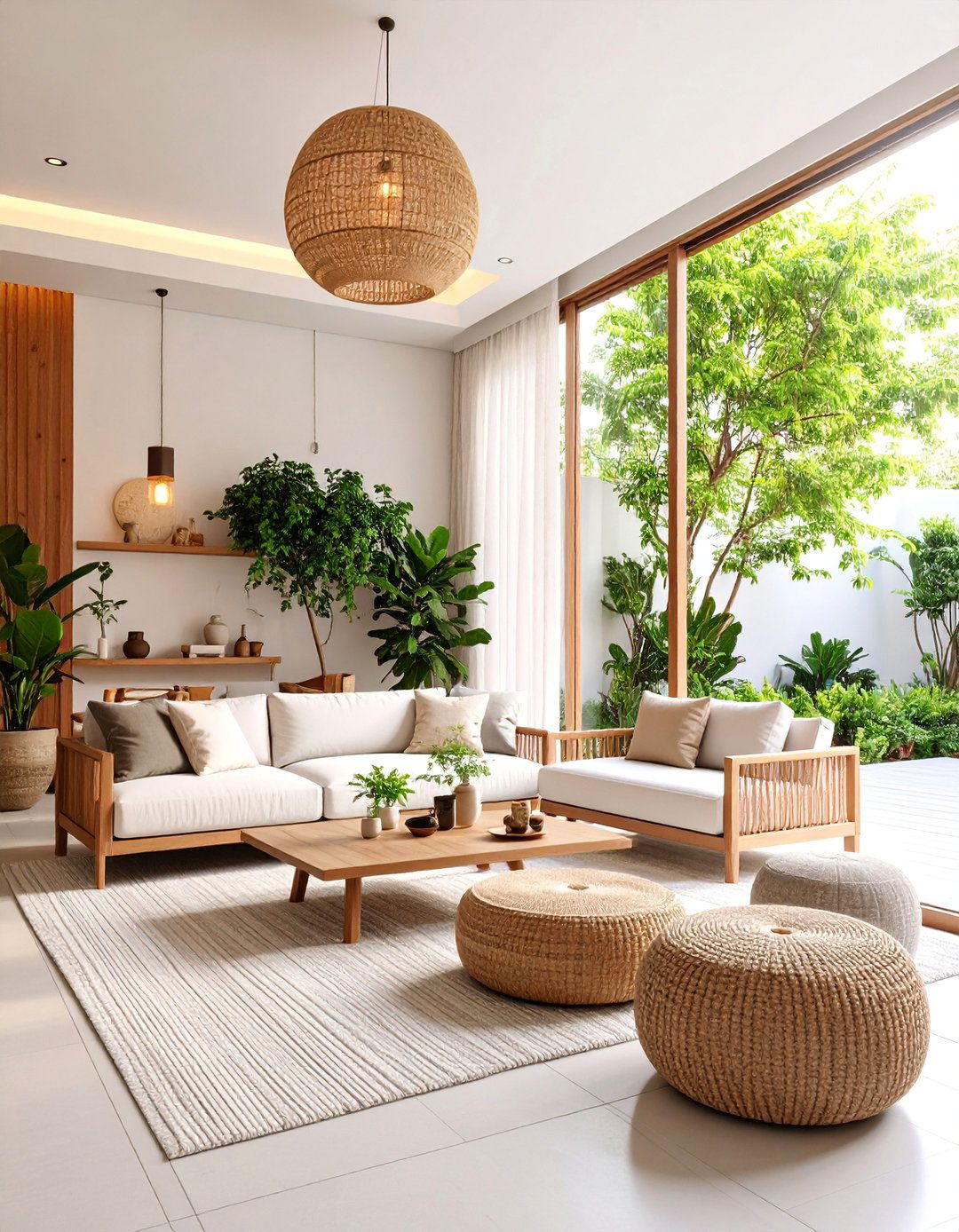
Design an indoor living space that connects seamlessly with outdoor courtyards or garden areas, reflecting traditional Korean architectural principles that blur boundaries between interior and exterior environments. Large sliding doors or windows provide visual and physical connections to outdoor spaces, while similar materials and design elements create continuity between indoor and outdoor areas. Indoor plants and natural materials echo outdoor garden elements, while protected outdoor seating extends the living space during appropriate weather. The transition zones feature weather-resistant materials and furniture that can adapt to seasonal use patterns. This design creates expanded living areas that honor Korean traditions of garden integration while providing flexible space for various activities and entertainment needs.
22. Korean Living Room with Vintage Modern Fusion

Blend carefully selected vintage Korean furniture and decorative objects with contemporary design elements to create living spaces that honor the past while embracing present-day comfort and functionality. Antique Korean chests, traditional screens, or vintage pottery serve as focal points within modern room layouts, while contemporary furniture provides daily comfort and convenience. The color palette bridges traditional and modern aesthetics through neutral backgrounds with selective vintage-inspired accent colors. Modern lighting, updated textiles, and contemporary art complement rather than compete with vintage pieces. Storage solutions accommodate both antique objects and modern lifestyle needs. This approach creates unique, personally meaningful living spaces that celebrate Korean design heritage while supporting contemporary family life.
23. Korean Living Room with Multi-Generational Design

Create a living space that accommodates multiple generations living together, reflecting Korean family values while providing appropriate spaces and features for different age groups and mobility needs. Seating options include both traditional floor arrangements and contemporary furniture with proper back support for older family members. Lighting provides adequate illumination for reading and detailed activities while maintaining ambient comfort. Storage solutions accommodate different personal belongings and interests across generations. The design incorporates safety features and accessibility considerations without compromising aesthetic appeal. Activity zones support various interests from children's play areas to adult conversation spaces. This approach honors Korean family traditions while creating practical, comfortable environments for modern multi-generational households.
24. Korean Living Room with Sustainable Design Elements
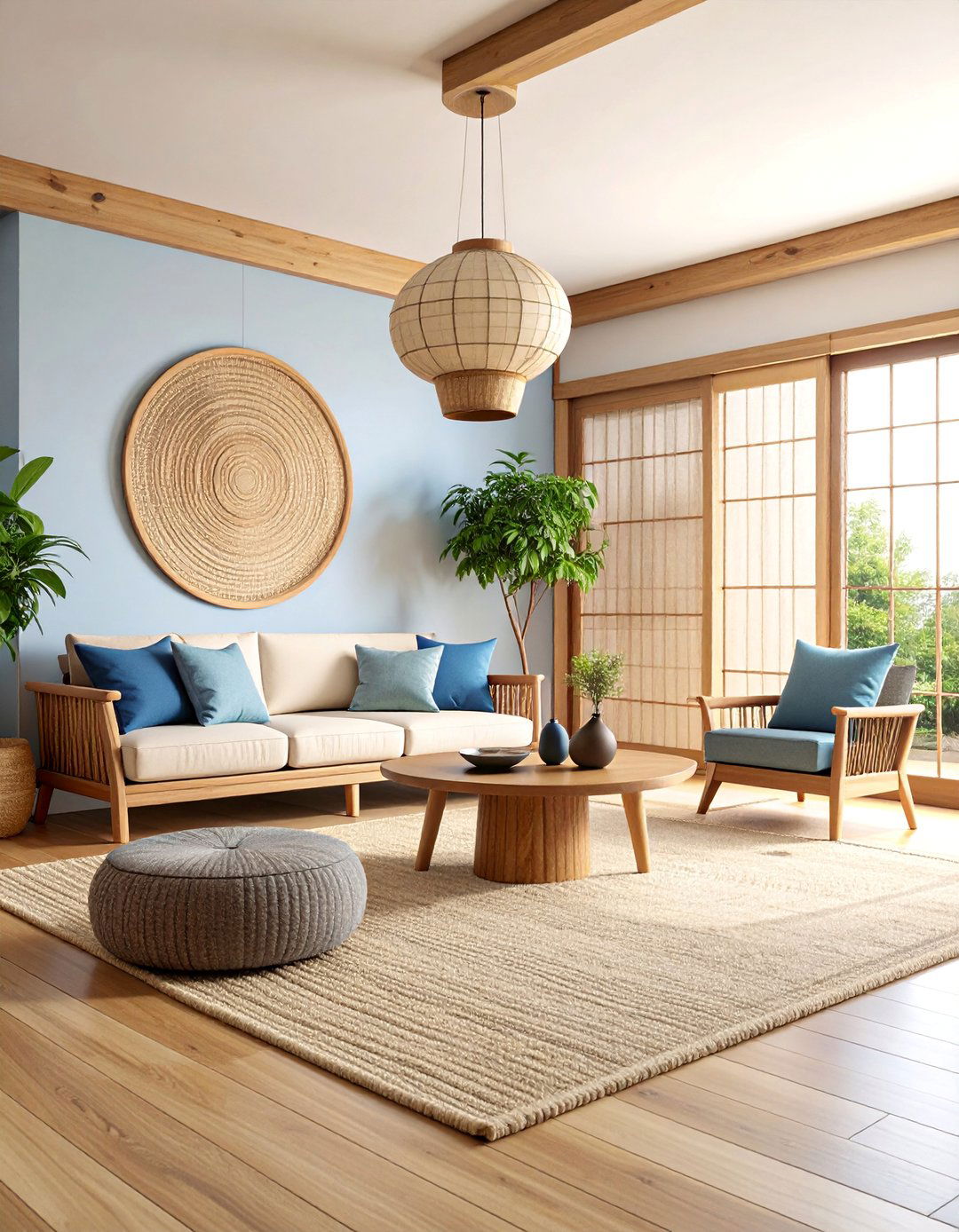
Develop an environmentally conscious living space using sustainable materials, energy-efficient systems, and eco-friendly practices that reflect growing Korean awareness of environmental responsibility and traditional values of harmony with nature. Furniture pieces feature reclaimed wood, recycled materials, or sustainably sourced natural materials that reduce environmental impact. Energy-efficient lighting, heating, and cooling systems minimize resource consumption while maintaining comfort. Indoor plants improve air quality while connecting inhabitants with nature. Local and traditional materials reduce transportation impacts while supporting regional craftspeople. Waste reduction strategies include multi-functional furniture, durable materials, and repair-friendly design elements. This approach creates healthy, responsible living environments that honor both environmental stewardship and Korean design principles.
25. Korean Living Room with Personal Cultural Expression

Design a living space that allows for personal expression of Korean cultural identity while accommodating individual family history, interests, and contemporary lifestyle needs. Family photographs, personal artwork, travel souvenirs, and meaningful objects create personal narratives within Korean design frameworks. Traditional elements like calligraphy, musical instruments, or ceremonial objects reflect individual cultural connections and family traditions. Contemporary Korean cultural references through books, music systems, or modern art express current interests and connections. The design balances personal expression with Korean aesthetic principles of harmony, simplicity, and respect for beautiful objects. Flexible display systems allow for changing exhibitions of personal collections and seasonal celebrations. This approach creates unique, meaningful living spaces that honor both Korean culture and individual family identity.
Conclusion:
Korean living room design offers timeless principles that create peaceful, functional, and beautiful spaces for modern homes. These twenty-five ideas demonstrate how traditional Korean aesthetics can adapt to contemporary lifestyles while maintaining core values of simplicity, natural harmony, and thoughtful design. Whether incorporating traditional elements like ondol heating and hanji screens or embracing modern trends like sustainable materials and technology integration, Korean-inspired living rooms provide frameworks for creating spaces that nurture both body and spirit while supporting family life and social connection.




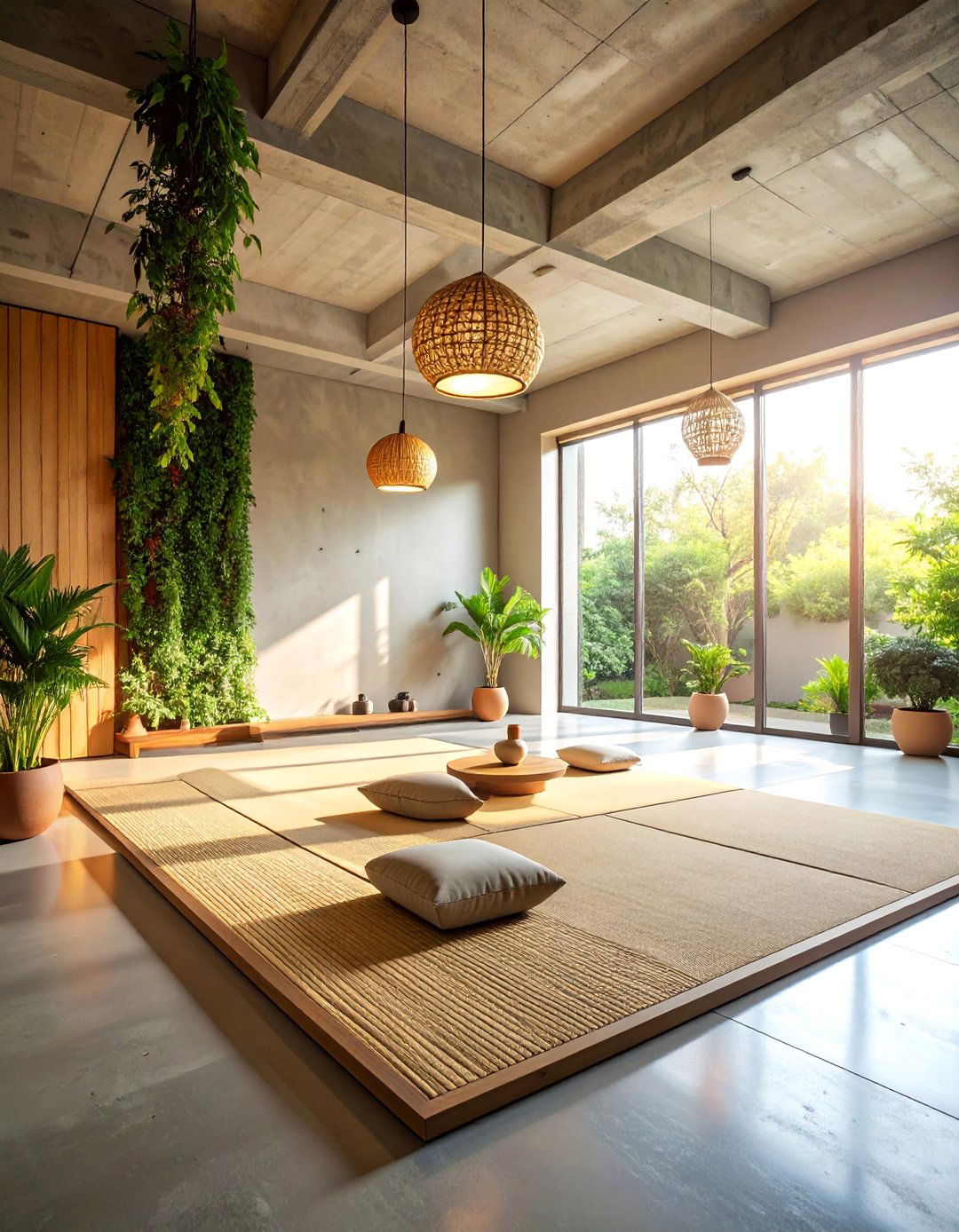
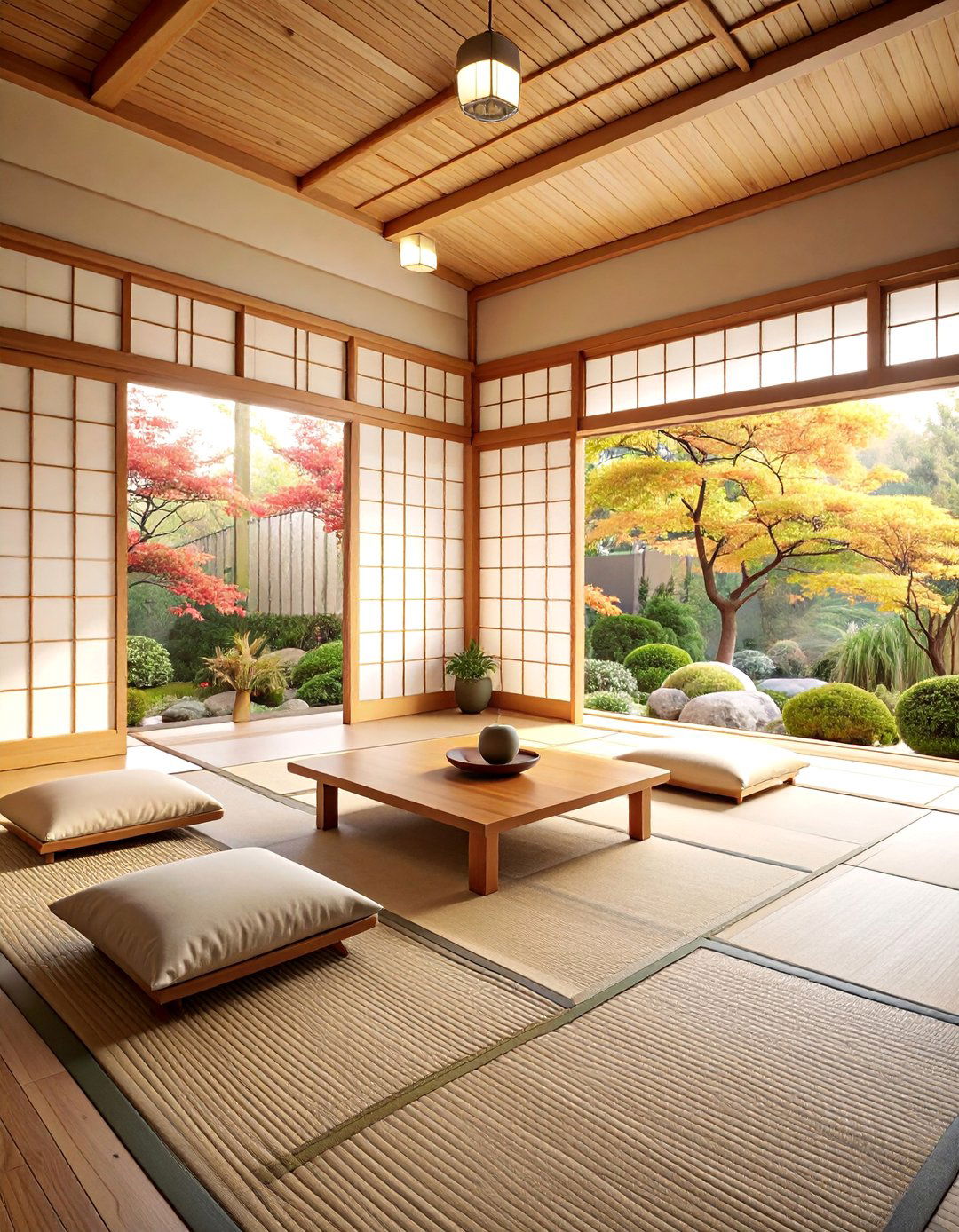
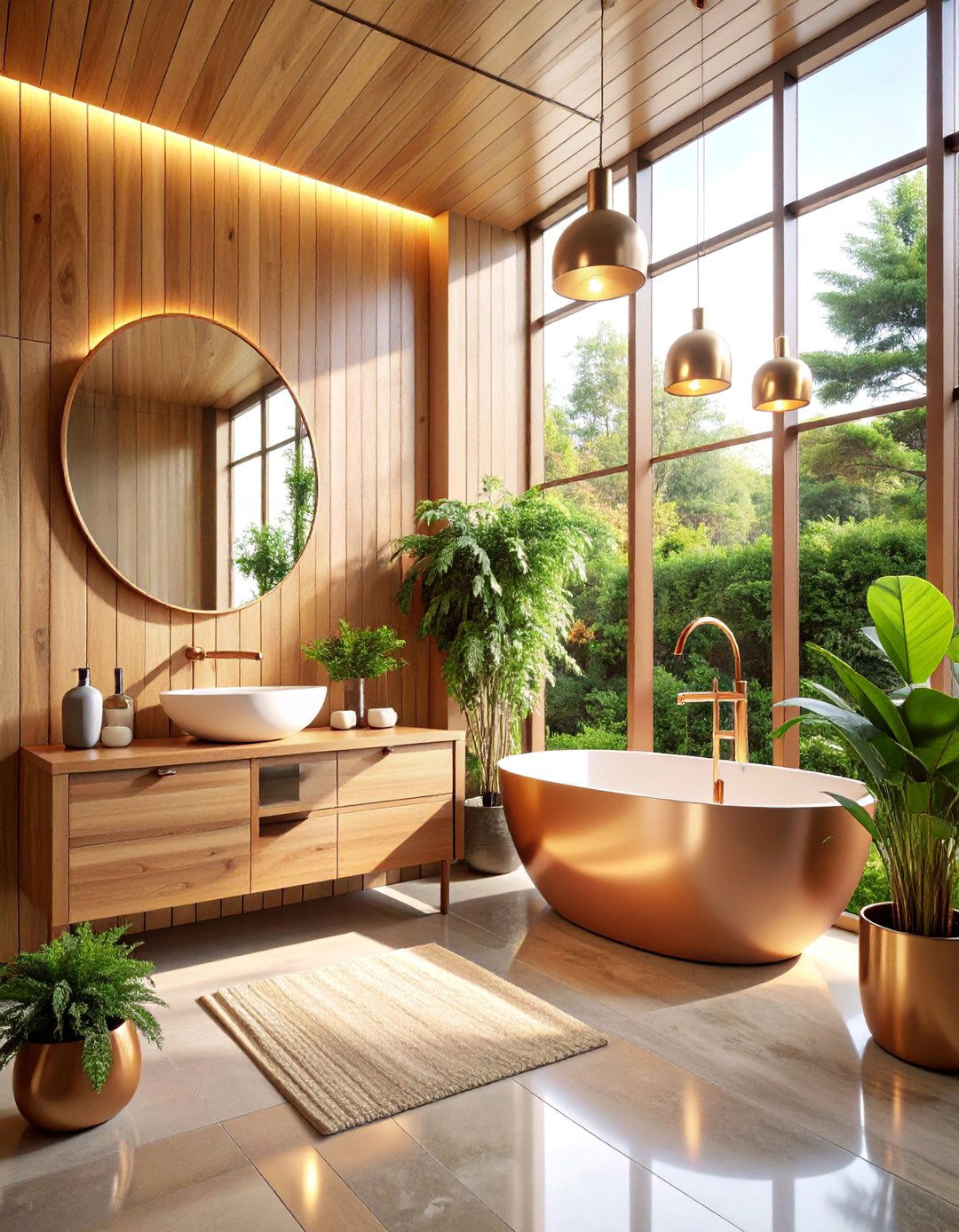



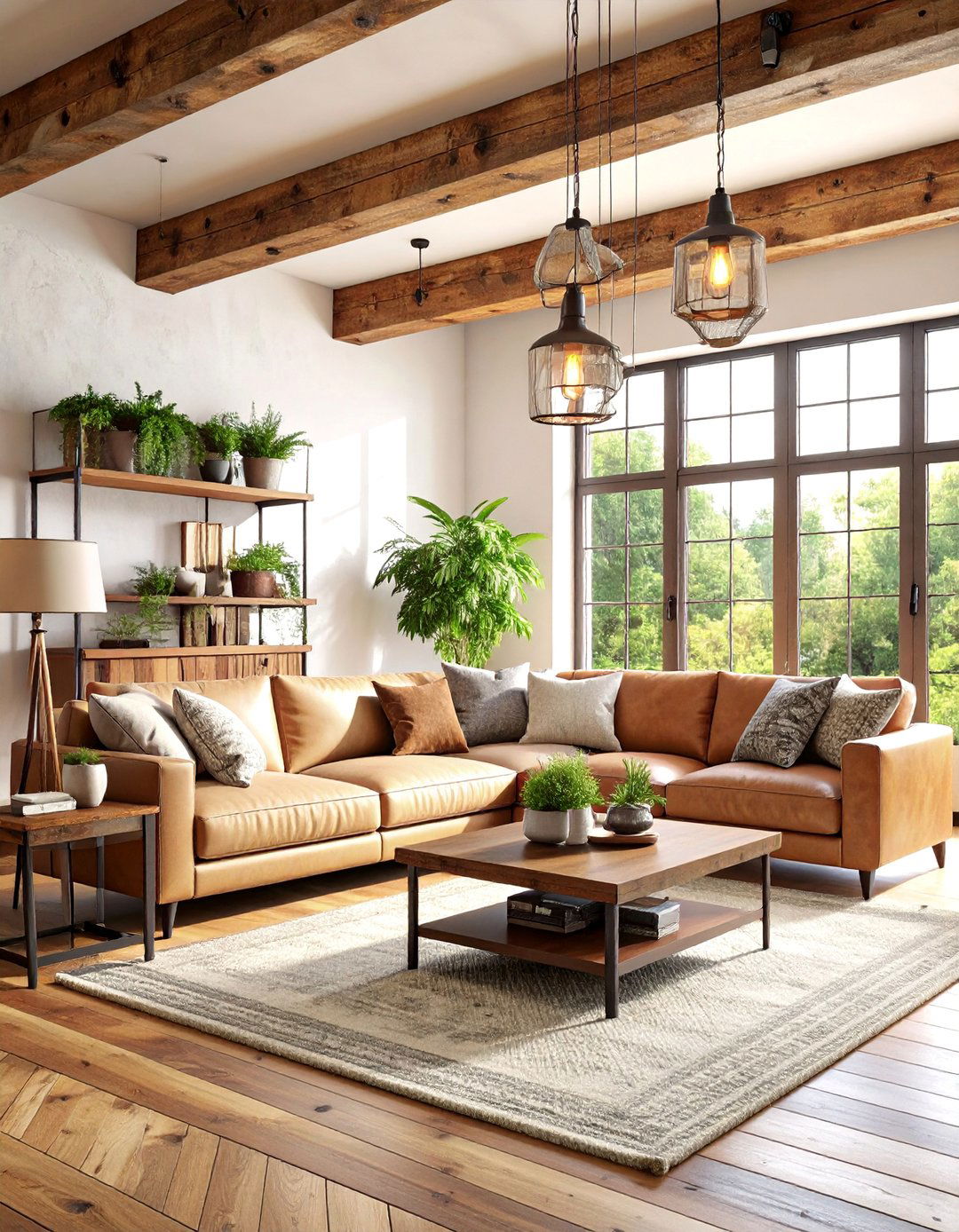


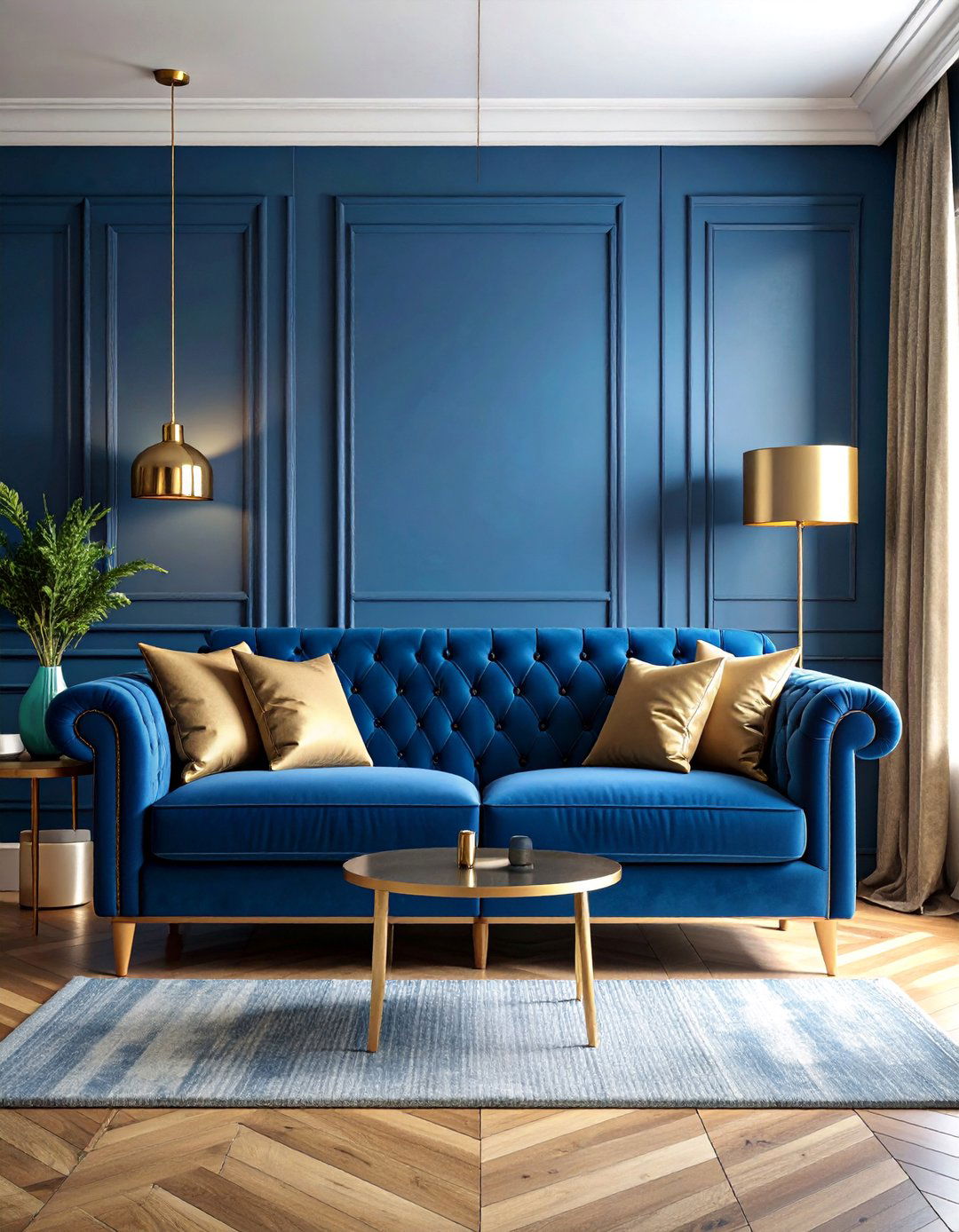
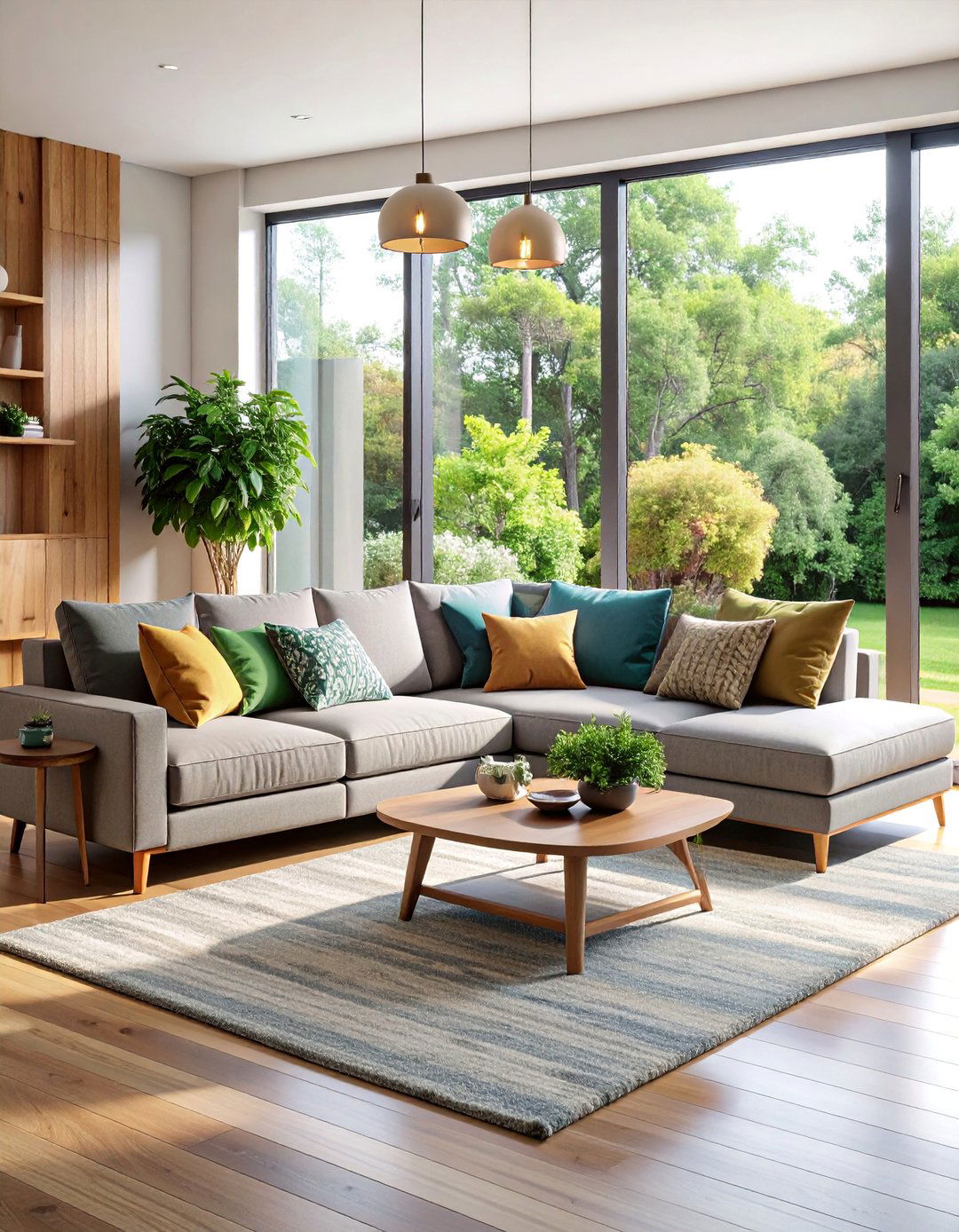
Leave a Reply